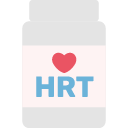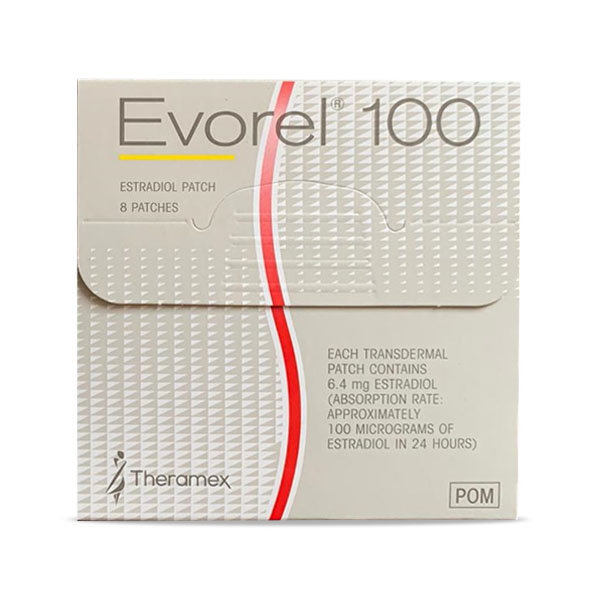| 8 patches Evorel Patches | £21.35 |
| 16 patches Evorel Patches | £25.79 |
| 24 patches Evorel Patches | £30 |
Evorel Patches

Hormone Replacement Therapy (HRT) for oestrogen deficiency symptoms in peri- and post-menopausal women.

Like any other prescription medication you must consult a doctor before using it. PrivateDoc offers a confidential free consultation service that may result in you receiving a prescription for Evorel Patches if it is deemed appropriate and Evorel Patches can prescribed safely.

Complete a 100% free and secure consultation to explore your treatment options. How our online prescription consultation works.
What are Evorel Patches?
Evorel Patches are used for Hormone Replacement Therapy (HRT) for oestrogen deficiency symptoms in peri- and post-menopausal women.
Evorel 50, 75 and 100 only:
Prevention of osteoporosis in post-menopausal women at high risk of future fractures who are intolerant of, or contra- indicated for, other medicinal products approved for the prevention of osteoporosis.
How much do Evorel Patches cost?
Strength
Pack size
How do you use Evorel patches?
Evorel patch’s are applied to the skin twice weekly. Evorel should be applied to the skin as soon as it is removed from the wrapper. Recommended application sites are on clean, dry, healthy, intact skin and each application should be made to a slightly different area of skin on the trunk below waistline. Evorel should not be applied on or near the breasts.
Evorel should remain in place during bathing and showering. Should it fall off during bathing or showering the patient should wait until cutaneous vasodilation ceases before applying a replacement patch to avoid potential excessive absorption. Should a patch fall off at other times it should be replaced immediately.
Patients can be advised to use baby oil to help remove any gum/glue which may remain on their skin after patch removal.
Read the Patient Information Leaflet
Pregnancy and lactation
Pregnancy:
- Evorel is not indicated during pregnancy. If pregnancy occurs during use of Evorel, treatment should be withdrawn immediately.
- There are no clinical data on exposed pregnancies.
- Studies in animals have not shown reproductive toxicity.
- The results of most epidemiological studies to date relevant to inadvertent fetal exposure to combinations of oestrogens (and progestogens) indicate no teratogenic or foetotoxic effect.
Lactation:
- Evorel is not indicated during lactation.
Side effects
Very common (1 in 10 people or more):
- Irritation the area where the patch has been used.
Common (1 in 10 people or less):
- Hypersensitivity, sleeping problems, depression or anxiety, headache, palpitations, varicose veins, breast pain, feeling or being sick, hot flushes, diarrhoea, breast pain, back or joint pain, vaginal discharge, irregular menstrual bleed, painful periods, fluid retention, tiredness or weight gain.
Uncommon (1 in 100 people or less):
- Thrush, loss of libido, flatulence, itching, rash, swelling in the hands and feet, or muscular pain.
This is only a summary, please refer to patient information leaflet provided or link below for comprehensive list. Patient Information Leaflet
Get Started How much do Evorel Patches cost?Contraindications
Evorel Patches should not be used by women with any of the following conditions:
- Known, current or past or suspected breast cancer
- Known or suspected oestrogen-dependent malignant tumours (eg endometrial cancer) or pre-malignant tumours (e.g. untreated atypical endometrial hyperplasia)
- Undiagnosed genital bleeding
- Previous idiopathic or current venous thrombo-embolism (deep venous thrombosis, pulmonary embolism),
- Active or recent past arterial thrombo-embolic disease (eg cerebrovascular accident, angina, myocardial infarction)
- Acute liver disease, or a history of liver disease as long as liver function tests have failed to return to normal
- Known thrombophilic conditions (e.g. protein C, protein S or antithrombin deficiency see section 4.4).
- Known hypersensitivity to the active substances or to any of the excipients
- Porphyria
Meet our team
PrivateDoc is happy to introduce you to some of our leading UK licensed clinicians.








